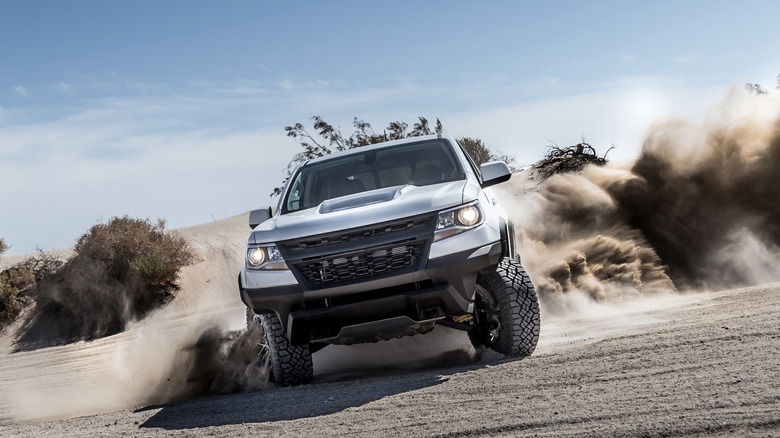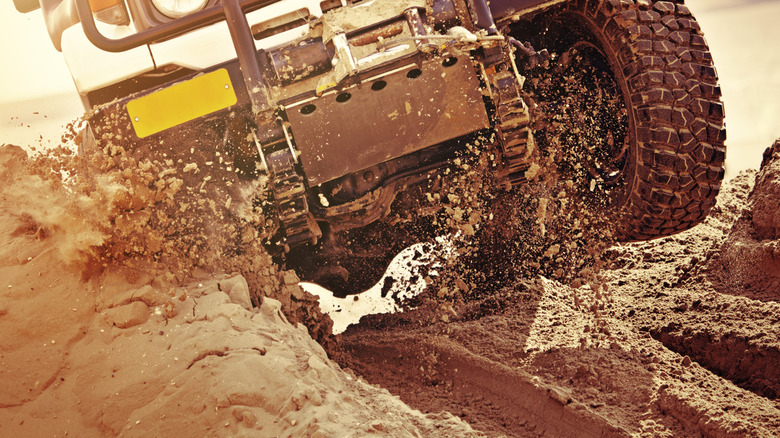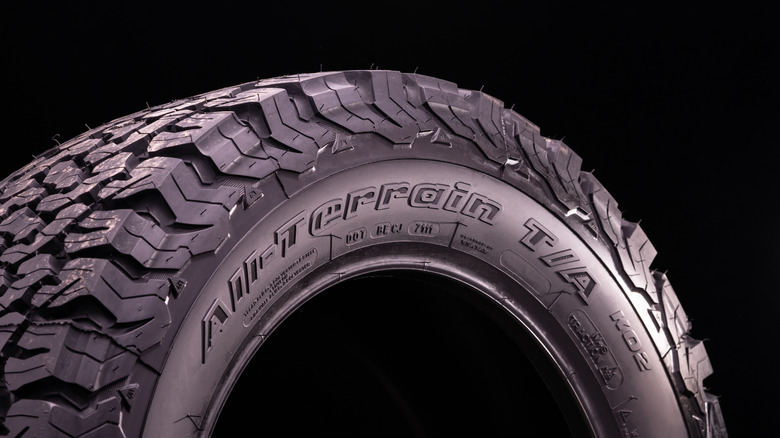What Tire Ply Rating Should Your Off-Road Vehicle Have? (And Why It's Important)
If you fancy yourself an off-road enthusiast, you no doubt gave considerable thought to the vehicle you chose to pilot when you're venturing off the asphalt and into more treacherous terrains. Whether you selected one of Subaru's many off-road ready vehicles, or something more aggressive like the SlashGear approved 2024 Ford Ranger Raptor, we hope you've paid as much attention to the tires adorning the vehicle, because having the right set of tires on your off-roading vehicle can be just as important as other factors like torque, suspension, and ground clearance.
Those who have spent any time thinking about what tires you want to outfit your off-road vehicle with, odds are you've read a bit about ply ratings. It's also possible that you have no idea what those words mean. It might surprise you, then, to learn that tire ply has almost nothing to do with tread patterns or the size of the tire. Rather, tire ply — as with toilet paper ply, for instance — applies a number to the layers of materials used in its making, be that the thread, cord, and cotton in older tires, or the more advanced compounds used in modern offerings.
Per some off-roaders, folks who are looking to take their vehicle off the beaten path with any regularity should do so on tires with at least a 10-ply rating. And yes, the general rule of thumb is that the higher a tire's ply rating is, the better it should be for off-roading.
The ply rating is important as it measures a tire's off-road toughness
For the sake of clarity, 10 is not the highest ply rating that can be applied to a tire. For the light truck range that many off-roaders need for their vehicles, the number generally caps at 12- or 14-ply tires. For heavy-duty vehicles, however, the number can go higher. Whatever the case, it is perhaps worth noting that tire-ply is also a slightly outdated way of measuring tires, as they are no longer layered with the same materials as days of yore. Despite the shift in materials used in modern tires, the ply rating is still pretty important in the context of off-roading, as it essentially measures a tires toughness and durability.
More specifically, ply ratings, in part, reflect a tire's ability to resist the sort of cuts and punctures that can be caused by rocks and other poky fixtures you typically come across when traversing rougher off-road terrains. However, in the context of modern tires that utilize radial construction, the ply ratings are more a reflection of a tire's overall durability than they are the actual number of layers of material used in its making.
On top of general durability, current ply ratings are also more a measure of a tire's perceived load range. In turn, higher ply ratings can also reflect a tire's ability to carry heavier loads in off-road environments without failure. So, if you're using your truck or SUV to pull a trailer over rough terrain, a tire with a higher ply rating should aid in that endeavor.
Where to find the ply rating on a tire
Regarding load range, we should note that it is not typically assigned a numerical designation in the way a tire's ply rating is. Rather, load range gets a separate alphabetical assignment, with A being the lowest. The letters then correspond to a numerical ply rating number, and in the context of the 2- to 14-ply light truck tire range we've been discussing, A corresponds to 2, and upward until the G and 14 pairing.
That may sound a little complicated to the uninitiated, but the number and letter assignments for ply and load range are typically noted among a tire's specs page if you're searching for options online or in a store. If not, they should be listed on the sidewall of the tire itself, along with several other important letter and number designations which indicate things like tire type, width, aspect ratio, and place of manufacture.
As for where those designations can be found on the tire's sidewall, they are typically reflected not by a numerical number but by the letter assigned to the load range, and should be found near the designation for the tire's material. So, when you find that load range letter — it should range from A to G, as previously noted — you'll need to determine the corresponding ply number. For the sake of this piece, a 10-ply rating will be reflected by an E, so when you're determining which off-road tires to buy, you'll want to start your search there.


